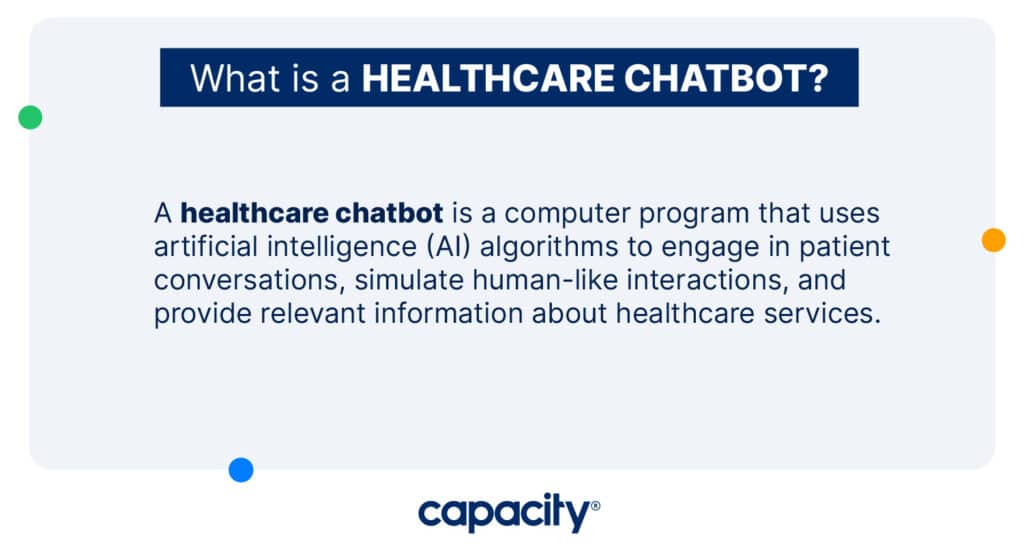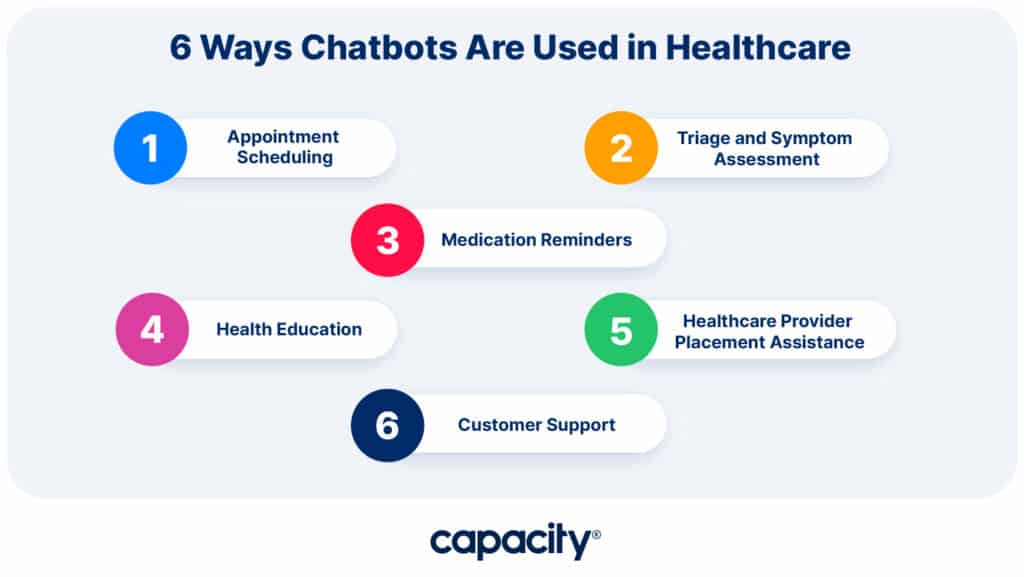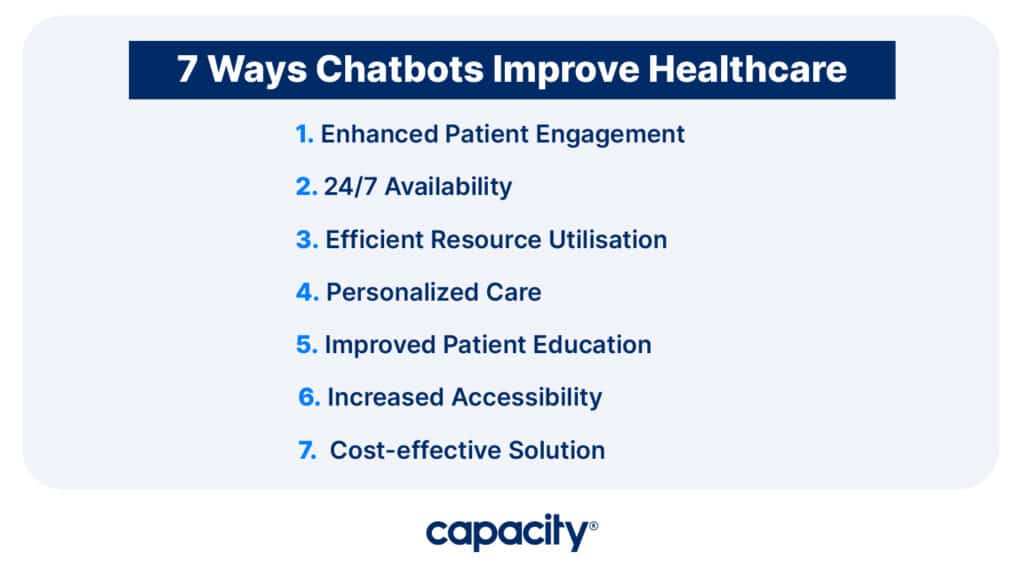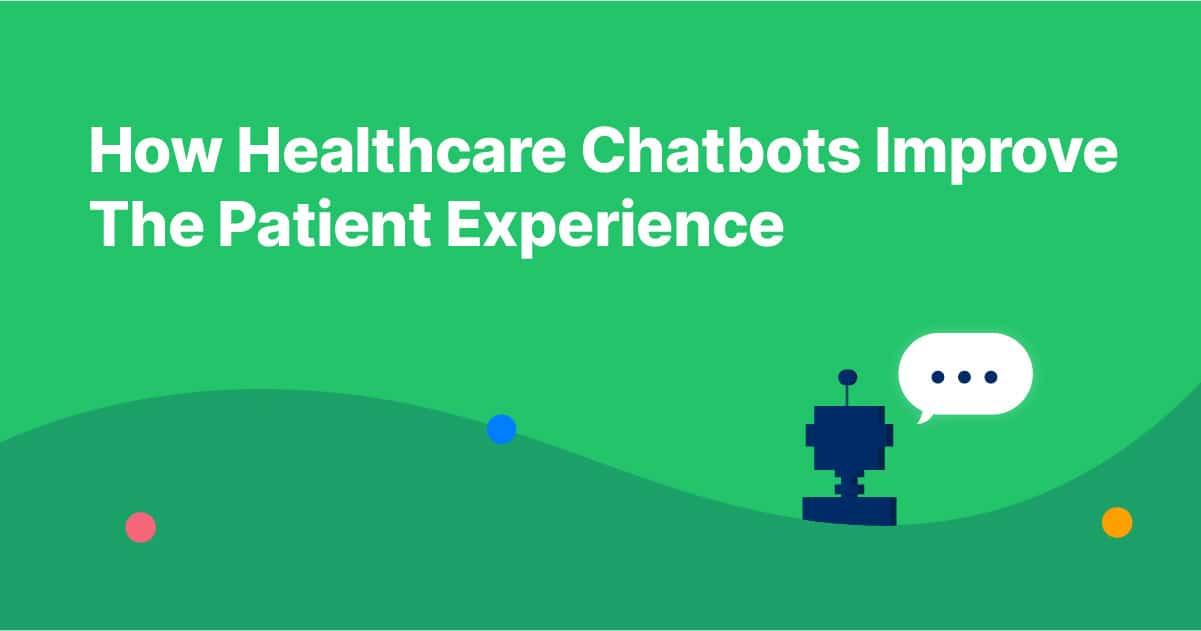Once upon a time, not all that long ago, visiting the doctor meant sitting in a crowded waiting room. Maybe you’d sit and flip through a stack of outdated magazines. And without a doubt, you’d fill out a massive stack of paperwork. It was like trying to navigate a maze with no clear exit.
Now, imagine having a personal assistant who’d guide you through the entire doctor’s office admin process. They’d answer your questions and concerns immediately. And they’d help you figure out exactly what you need to do next. This is where a healthcare chatbot comes in.
A healthcare chatbot can act as a virtual concierge for your patients. It can simplify your experience and make it easier for folks to get the help they need when they’re not feeling their best.
Think of chatbots as the GPS of healthcare. Your GPS helps you find your way on a road trip, right? A healthcare chatbot can help guide you through the healthcare journey. Using AI and natural language processing, chatbots can help your patients book an appointment or answer a question.
What is a Healthcare Chatbot?
A healthcare chatbot is a computer program that uses artificial intelligence (AI) algorithms to engage in patient conversations, simulate human-like interactions, and provide relevant information about healthcare services.

Your patients can access the chatbot through a ton of different channels, giving them access to help anytime and anywhere. You can train your bots to understand NLP and respond in real time. That’ll help your patients get a seamless and convenient experience when they need it.
How are chatbots used in healthcare
You can use chatbots in several ways to improve your patient engagement and care delivery. Here are some of the common use cases of chatbots in healthcare:

Appointment scheduling
Chatbots can help your patients book an appointment. It can access provider calendars and suggest available times. Patients can give their preferred date and time. Then the chatbot can quickly schedule their appointment.
Triage and symptom assessment
A chatbot can ask patients a series of questions to help assess their symptoms. And then, the bot can make recommendations based on their responses. Those responses can also help the bot direct patients to the right services based on the severity of their condition.
Medication reminders
Chatbots can send reminders to your patients about their medications. Whether they need a refill or simply a reminder to take their prescription, the bot can help. This helps to improve medication adherence and prevent missed doses. Patients can also ask questions about their medication. This is helpful in IDing side effects, appropriate dosages, and how they might interact with other medications.
Health education
A healthcare chatbot can give patients accurate and reliable info when a nurse or doctor isn’t available. For instance, they can ask about health conditions, treatment options, healthy lifestyle choices, and the like. This lets patients make informed decisions about their healthcare.
Healthcare provider placement
Travel nurses or medical billers can use AI chatbots to connect with providers when looking for new assignments. Bots can assess the availability of job postings, preferences, and qualifications to match them with opportunities.
Customer Support
Chatbots can help patients with general inquiries, like billing and insurance information. Or they can provide facility directions and appointment rescheduling. Patients can get quick and accurate answers to their questions without waiting hold.
How can chatbots improve healthcare?
Using healthcare chatbots has several benefits to improve your patient experience. Some of them are:

1. Enhanced patient engagement
Healthcare chatbots give patients an easy way to access healthcare information and services.
Patients can interact with intelligent bots using familiar conversational language. And that makes asking questions and seeking information intuitive. This can help patients feel more involved in their healthcare decisions.
2. 24/7 availability
Patients can access your healthcare chatbots anytime, supporting patients whenever and wherever needed. This can be especially beneficial for patients with urgent questions or concerns outside regular business hours or those in different time zones.
Here are some other perks of 24/7 availability:
- Instant responses – Say goodbye to waiting on hold for hours.
- Eliminating the need for patients to wait for office hours or callbacks.
- On the road or at a different location? Patients will still have access to important information.
3. Efficient resource usage
Bots can handle routine tasks like appointment scheduling and basic inquiries. So that frees up your providers’ time to focus on more complex patient needs. And that then can lead to more efficiency and productivity, resulting in improved care.
4. Personalized care
Healthcare chatbots can provide personalized responses based on patients’ needs and preferences. Using AI, chatbots can analyze patient data, like medical history and symptoms. Then they can provide tailored recommendations and information.
5. Improved patient education
Your chatbot can answer general health questions for your patients. Maybe someone needs help to stop smoking. Or perhaps another person needs fitness tips for ages 70 and over. Whatever it is, patients can ask questions and get evidence-based answers back.
6. Increased accessibility
Patients can access your bots from several different channels. That means they get help wherever they are without having to call or meet with a human.
AI chatbots can improve healthcare accessibility for patients who otherwise might not get it. For instance, say someone has limited transportation. They’re able to get answers without travel.
7. Cost-effective solution
Implementing healthcare chatbots can be a cost-effective solution for healthcare providers.
Chatbots can handle several inquiries and tasks simultaneously without added human resources. This can save you on staffing and admin overhead while still letting you provide the quality of care your patients expect.
7 Steps to Create an AI Healthcare Chatbot
Creating an AI healthcare chatbot involves a few steps to ensure its effectiveness and accuracy. Here’s how to get started:

Identify the specific purpose and scope of the healthcare chatbot. And then determine the tasks and functionalities the chatbot will perform. Do you need it to schedule appointments, assess symptoms, and provide health education? Define the target audience and their needs to tailor the chatbot’s responses accordingly.
Step 2. Choose the right platform and technology:
Select the right platform and technology for developing the chatbot. There are a ton of chatbot platforms and frameworks. And many of them (like us) offer pre-built templates and tools for creating your healthcare chatbot.
Step 3. Train the Chatbot:
Train your chatbot using machine learning algorithms and data. The chatbot needs to understand natural language and respond accurately to user inquiries. Start by giving the bot a large dataset of relevant healthcare data. This might be medical literature, patient records, and symptom databases.
Here are key points to consider:
- Natural Language Processing (NLP): Natural language processing is a subfield of artificial intelligence that focuses on enabling computers to understand and process human language.
- Dataset Selection and Preparation: The quality and relevance of the dataset used for training the chatbot can drastically impact its accuracy and performance.
- Continuous Learning and Improvement: Chatbots can continuously learn and improve their performance using machine learning tech.
Strep 4. Design Conversational Flow:
Design the conversational flow of the chatbot to ensure smooth and intuitive interactions with users. Plan the conversation flow, including how the chatbot will greet users, ask questions, and provide responses. Incorporate error handling and fallback mechanisms to handle situations where the chatbot cannot understand or respond to user inquiries.
Step 5. Test and Refine:
Test the chatbot extensively to ensure its accuracy and effectiveness. Start by thorough testing with scenarios. And then add user inputs to identify issues or gaps in the chatbot’s functionality. Refine and optimize the chatbot based on the feedback and testing results to improve its performance.
Step 6. Ensure Security and Privacy:
Implement appropriate security measures to protect patient data and ensure compliance with healthcare regulations, like HIPAA in the US or GDPR in Europe.
Use encryption and authentication mechanisms to secure data transmission and storage. Also, ensure that the chatbot’s conversations with patients are confidential and that patient information is not shared with unauthorized parties.
Step 7. Provide Continuous Monitoring and Maintenance:
Once the chatbot is deployed, monitoring its performance and continuously making necessary updates and improvements is crucial to overall success.
Monitor user feedback and analytics data to identify areas for improvement and make adjustments accordingly. And then, keep the chatbot updated with the latest medical knowledge and guidelines to ensure accuracy and relevance.
How Capacity Can Transform Patient Support
Selecting the right platform and technology is critical for developing a successful healthcare chatbot, and Capacity is an ideal choice for healthcare organizations. With its advanced AI capabilities, user-friendly interface, and pre-built templates for healthcare applications, Capacity provides a powerful platform for creating effective chatbots to improve patient experience and care.
Capacity deflects over 90% of FAQs away from support teams, freeing agents to focus on more critical tasks. See the power of Capacity and try it for free today!

Automate Your Work
Capacity’s enterprise AI chatbot can help:
- Answer FAQs anytime, anywhere
- Find relevant documents within seconds
- Give surveys and collect feedback





